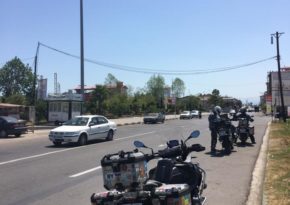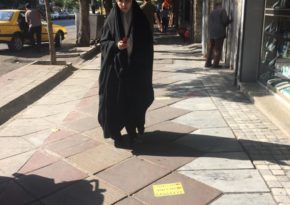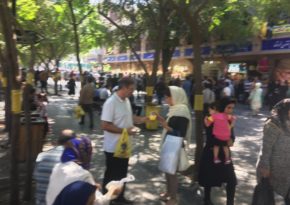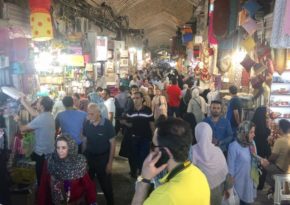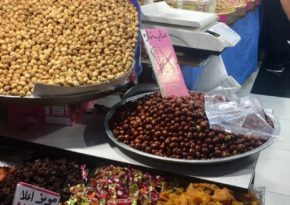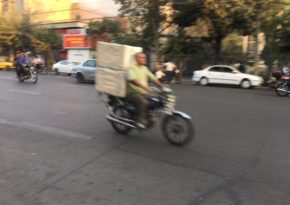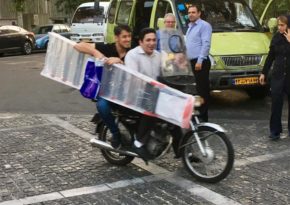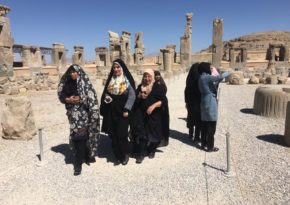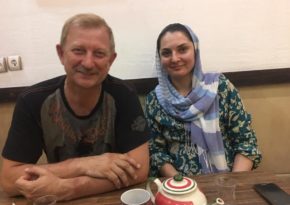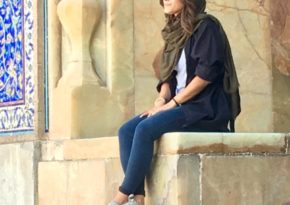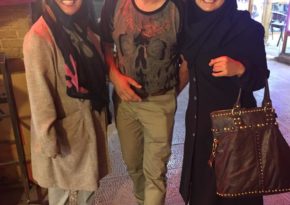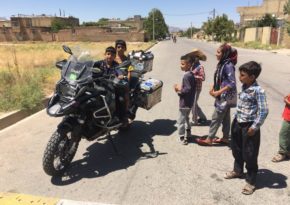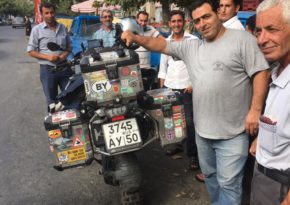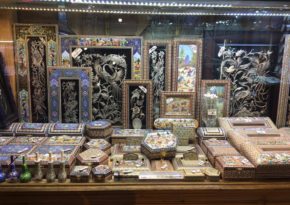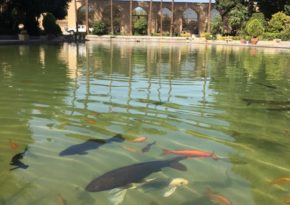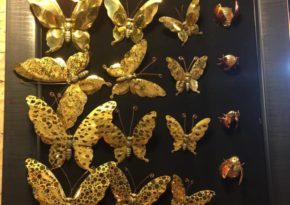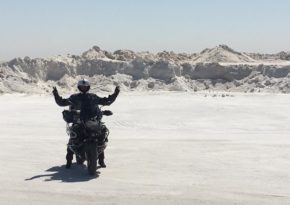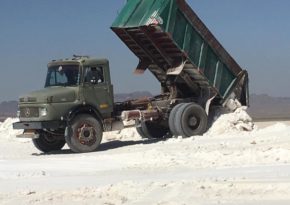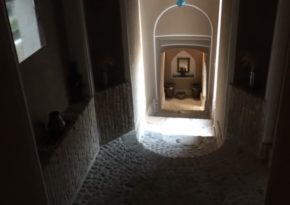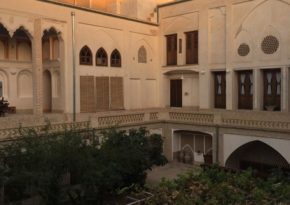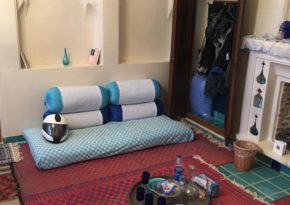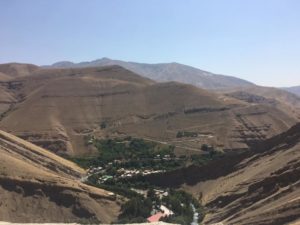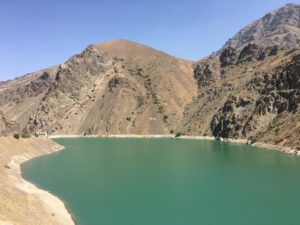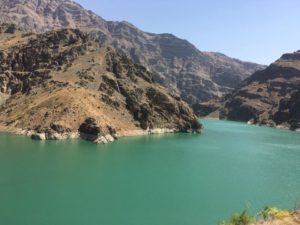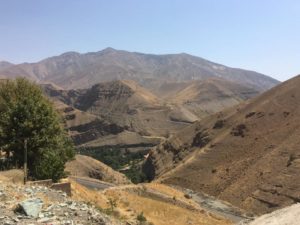A motorbike trip "Across the Caspian Sea — to the Pamir Mountains!" Part 2. Iran
One of the stages of our motorbike journey came to an end yesterday. And that was a trip to Iran. Unfortunately, there exist tight restrictions on the use of the Internet in this country and Facebook is generally blocked, so I couldn't post my notes in real time. However, I will try to describe my impressions as post-factum.
In general, in the Internet you can find very little information about the Islamic Republic of Iran from those who have traveled around it on their own. And this country definitely has got something to offer you!
On the very first day after crossingthe border between Azerbaijan and Iran we stayed overnight in a hotel in Tehran.
The next day was fully dedicated to observing the capital.

Tehran is a huge metropolis. When I think of a city that I can compare it with, I would choose Istanbul from all the capitals of the world I have been to. But Tehran is even cooler! It is populated by 11 million people (and add three million visitors). The oriental flavour is just in the air. We saw domes of Shiite mosques that have two minarets, old buildings of oriental architecture side by side with modern glass and concrete ones, street markets, women in headscarves and black capes (burqas). We also experienced the crazy traffic on the roads, which defies any logic. (I will provide you a separate chapter about traffic regulations in Iran and the way they are followed). Everything is very unusual and interesting.

What we had really wanted was to get to the famous market in Tehran. However, we were a little disappointed. It's indeed a huge bazaar, which looks like a whole city within another city, but... Chinese imports had flooded everything. To a certain extent it reminded me of the Cherkizovsky market ten years ago. Though the one in Tehran has saved its own flavor, of course.
Let me tell you a little about the traffic on the streets of Tehran (and on the roads of Iran in general). I do not know if there are any traffic regulations in this country… They are likely to exist formally, but I strongly doubt this fact. And although the entrance to the city centre is limited, the traffic jams frequently appear here.
Therefore, the most common means of transport in Tehran is a low-capacity Honda motorbike of local production. It can be used as a taxi and as a family minivan. Here you can often see a family of four riding this two-wheeled miracle. A 5-year-old child would sit on the tank, then a father at a handlebar, who would talk on a mobile phone, behind him would sit a mother and between the parents there would be another child of three years old. Certainly, nobody wears helmets or any protective equipment.

The rules of crossing the road depend on the one who first has come on it. Pedestrians can cross the street anywhere and even at the crosswalk they do not have an advantage as the cars flow round them from all sides. Movement towards the stream, across the road and along the sidewalks is considered to be alright.
Women in Iran.
In the Islamic Republic of Iran, both secular laws and sharia norms are in force at the same time. To be more precise, all the laws that are accepted by the Parliament (Majlis) must comply with Sharia. Therefore, on one hand, women here are not as restricted in rights as in other Arab countries, but on the other hand, they still have some restrictions that are unusual for Europeans. So, according to the law, all women in Iran must wear a headscarf, even foreigners and tourists.

A husband can officially forbid his wife to work. She also cannot obtain a foreign passport without a notarized permission from her spouse. However, at the same time, local women don't feel oppressed: they drive cars, get on with people easily and are well-educated (in cities). They are smiling and really attractive! :) The burqa is worn only if a woman wants so and mostly they open their faces (I have not seen a single woman, whose face would be completely covered).
The roads in Iran are of very good quality. Big cities are connected by motorways that cross the vast desert areas from north to south and from east to west. The speed limit on motorways is 110 km/h and you can often see police cars that control the traffic with radars. There are many toll road sections.

By the way, in Iran motorbikes are not allowed on high-speed highways. There you can often see the signs placed everywhere and duplicated on the asphalt, which remind you of this fact. But it didn't concern us! As well as other restrictions. So we never even paid for the fare. The thing is, when we rode up to the payment point, the face of the officer appeared in the window, he smiled, greeted us and waved his hand to make his permission to let us go clear. The policemen usually greeted us with smiles too. By and large, in Iran we felt like sacred cows in India and aliens at starships simultaneously! All because in this country it is legally prohibited to sell and ride motorbikes with an engine capacity of more than 250 cubic cm. There is simply none of this kind at all! Moreover, in ten days we covered more than 4000 km across Iran and have not met a SINGLE motorbiker! No wonder that when we made stops in a more or less public places, we were immediately surrounded by a crowd of people who wanted to look at an unusual equipment and ask questions about it.
The Iranian people, especially children, are very sociable, friendly and inquisitive. However, they are more courteous than the Mongols, for example. No one would climb on a motorbike or push the buttons without asking for permission, as well as in case of taking a picture together. Perhaps, I have never been photographed as much in my life as in these one and a half weeks. People took pictures of us from everywhere: while they were standing on the roadsides, leaning out of the car windows, catching us up on a motorbike and while waiting for a bus at a bus stop, of course. The only thing they missed was asking for our signatures. ;)

Isfahan is the third biggest city in Iran, and I really liked its national flavour. In the evening we went for a walk around the city centre. We were amazed with the fact that in the most affluent Iranian market, which is situated around the world's second largest and very beautiful Imam Khomeini Square, it is forbidden to sell any non-Iranian goods. Finally, this is a real oriental bazaar! Here you can find carpets, pieces of national clothes, very beautiful dishware, souvenirs, items made from copper and inlaid caskets. I doubt there's anything in the world that wouldn't be sold in this market.

The square itself is surrounded by the domes of mosques and appears to be a very popular picnic location with the city dwellers. At the weekend families come here and spread blankets right on the lawn around the pond with fountains and take out pots of soup, kebabs and other food.
It turns out that we usually go "for a barbecue" somewhere to the countryside and the Iranian people go to the very centre of the city, as if the Russian would go to Red Square, for example.
Isfahan → Shiraz → Yazd → Kashan…
These are the ancient and very colorful cities of Iran. Each of them requires at least a couple of days to see the main sights or just wander along the narrow streets and feel the spirit of these beautiful eastern cities. But, unfortunately, this doesn't correspond to the format of our trip. Two weeks of traveling around such a big and interesting country turned out to be very short.
From Kashan to Tehran we flew along an amazing motorway. To the left and right there was a desert, and somewhere closer to the horizon we could see a mountain range. In some sections the mountains approach the road so close that they look like covering half the sky. Suddenly, a fantastic view appeared in the valley on the right! That was a huge dried-up salt lake. A white endless space that merges with the sky.
We turned into a ground road and kept making much dust because of the rolled gravel cover for three or four kilometers more. We rode up to the supposed shore and an old guard came out of the cabin to meet us. He said something in Farsi and showed with a gesture that we couldn't go any further. At that time a MAN truck, loaded to the top with salt, was driving along a well-trodden road. Here salt is extracted in an open way with a use of an excavator and a loader. I took out a local bill, which equaled about five dollars, and the guard waved his hand, letting us go!

It was a very unusual sight! Mountains of salt… Dump trucks were being driven, loaders were being loaded... And an almost perfect sparkling surface reached the horizon. I made an attempt to go further, but as the surface was not completely solid, in some places I could get bogged down.
If you happen to travel to Iran, you shouldn't stay in luxury hotels, since they are too ordinary and boring. In every city there are inconspicuous-looking hotels that are called the Iranian House.

But you need to know where they are located. Usually it must be a seemingly unremarkable street of the old town. Then we found a wooden door, bolted from the inside. We knocked at it and immediately heard the footsteps on the stairs. With a creak, the half of the door opened and a person asked us what we wanted. We answered that we would like to stay overnight and have a meal. Then a narrow staircase led us inside and we got into the courtyard. We saw arbors entwined with grapes and a pond with fish there! What a beauty!!!

The rooms are placed around the perimeter of the courtyard behind the same wooden doors and padlocks. They are covered with carpets and pillows. Everything is very cozy, authentic and inexpensive! There is a shower, refrigerator and air conditioning!
It costs $30, breakfast included.
In the Internet I had read about the path from Tehran (or rather from Karaj) to Chalus as one of the most beautiful in the world.

And it turned out to be really interesting. Of course, maybe not the most beautiful in the world (for example, the road to Omalo made a greater impression on me), but still. A serpentine of about 100 km of excellent asphalt leads to the pass 2800 m high and then goes along a beautiful gorge, which has a mountain river, blocked by a huge dam. The only significant drawback is that this road is heavily congested so we had to drag ourselves in a continuous stream of cars, keeping the 2nd or 3d gear. It was tiresome!
We crossed the border between Iran and Azerbaijan quite quickly, just in an hour and a half. The Iranian officers found fault with my American visa again, and the Azerbaijanis didn't like the Armenian flag on my trunk. I have removed the sticker of the flag but kept my visa as it had been, since it was still valid for about another 3 years. However, I started to have doubts whether I would be able to visit the USA, having an Iranian visa then.
In general, while crossing various borders, you need to be on the alert constantly. I had an experience of tearing off the Abkhazian stickers at the entrance to Georgia, then tearing off the sticker with the St. George ribbon at the entrance to Ukraine and, finally, removing the USSR flag, because it might annoy someone! What a madhouse it is!
Video
Мотопутешествие Кавказ - Иран - Средняя Азия - Памир. Часть 2
 Cap-travel.ru
Cap-travel.ru